RSV detected in respiratory samples for the first time this season in Hungary
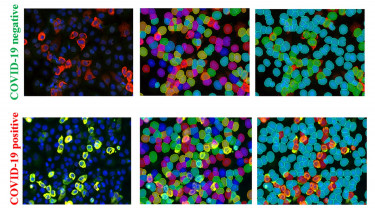
As regards the estimated number of Hungarians seeking medical help with acute respiraotry infection, the current respiratory season started worse than in the previous years. However, the ARI numbers have been lower than in the previous three years for the second consecutive week now. Meanwhile, the number of influenza-like illness (ILI) remains higher than in the previous three years.
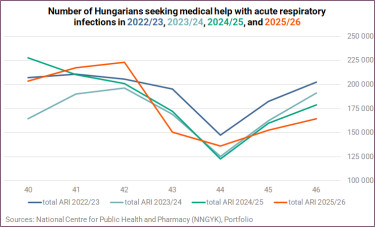
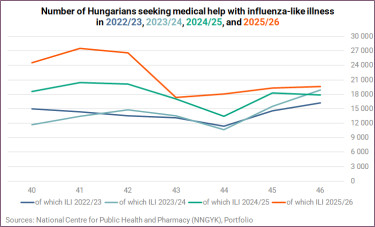
The share of ILI in ARI was 11.9%, also higher than in the previous three years, although down further from 12.7% a week ago and 13.3% two weeks earlier.
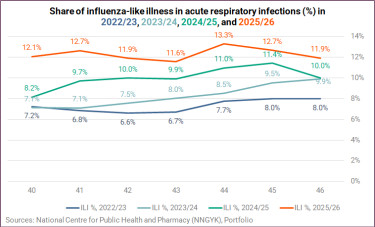
With regard to the number of ARI patients per 100,000 inhabitants, we were better off than in the previous three seasons.
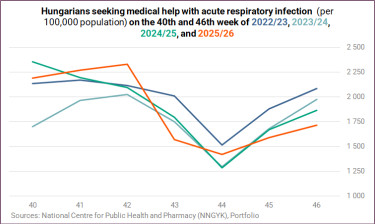
The number of patients with ILI per 100,000 people remained higher than the comparative figures of the previous three seasons.

In fact, this is the highest figure since 2011/2012.
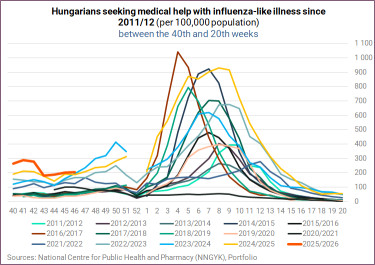
The Covid-19 positivity rate came in at 12.4% when considering all positive tests (17) of the samples submitted by sentinel GPs (137) and at 13.8% when calculating with all positive tests (21) in all of the samples (i.e. those submitted by sentinel hospitals and also traditional diagnostic samples, 152 in total).
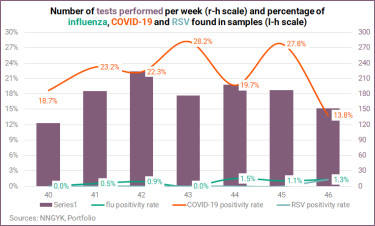
The coronavirus positivity rate retreated from a nearly 28% high and was lower on the 46th week than in 2023/24 and 2022/23 but higher than ni 2024/25.
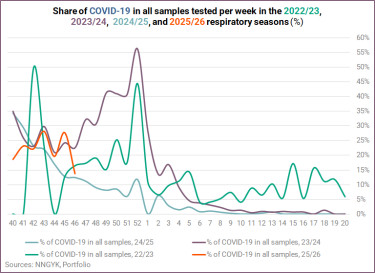
The influenza positivity rate remains low, just like in the previous years, and should start picking up more sharply around the 49th week. For the first time this season, two samples showed the presence of respiratory syncytial virus (RSV). The RSV positivity rate peaked around 24% in early 2024 in the previous season.
Hospitalisations
There were 85 people in hospital with severe acute respiratory infection (SARI), up from 75 a week earlier, of whom 13 tested positive for COVID-19 (15.3%), which compares with 23.1% in 2024/25 and 68.3% in 2023/24, when hospitals admitted more SARI patients on the 46th week, 104 and 161, respectively.
Seven of the 85 patients needed intensive of subintensive care, a ratio of 8.2%, which compares with 8 in the same week of 2024 and 15 in 2023 (with ratios of 7.7% and 9.3%, respectively).
More than 92% of people admitted to hospital with a coronavirus infection were over 60 years old (12 in total), and 41% of SARI patients were in this age group (35 in total). A bit more than a fifth of SARI patients were under two years old (18 in total).

The NNGYK also had some key data published since the official end of the previous respiratory season on the 20th week, which show a general increase in the number of hospitalsed SARI patients since the 35th week, except for a surprise drop on the 42nd week. We also find that SARS-CoV-2 is the main reason behind hospitalisations.


So far, this season is less serious than the previous ones when it comes to how many of all people with ARI end up in hospital. We were concerned a week ago that the orange line might be on its way to cross the blue (or green) ones, but it turned down instead.

The patterns of the previous years suggest that the ratio of coronavirus infections in hospitalisations should keep dropping and get close to 0-10% by the 5th or 6th week of next year. In parallel with this, influenza infections behind hospitalisations should start to pick up before the end of the year or early 2026. And then there's the respiratory syncytial virus (RSV) to consider.
This is how the pathogens 'swapped places' as the main reason behind hospitalisations last year.
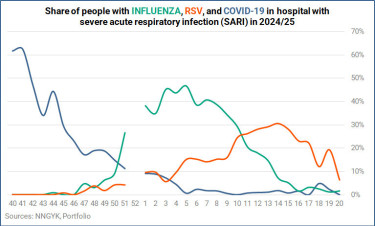
And this is how they have been changed in the current and past three seasons of respiratory infections. (Note that the the RSV was not reported to be behind any hospitalisation until the 47th week in 2024 and the 49th week in 2023, and that's why the orange line remains at 0% on that graph.)


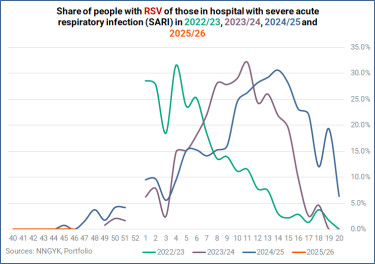
Age breakdown
44.5% (73,000) of people seeking medical help with an acute respiratory infection (ARI) in week 46 were children aged up to 14, up from around 59,000 or 38.8% a week earlier. More than a quarter (41,600) were aged 15–34.

The graphs below show a breakdown of ARI patients by age group for this year and the previous two seasons.
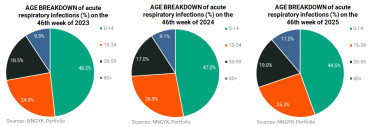
When it comes to ILI, the most affected age group was people aged 15-34, accounting for about 6,600 (33.8%) of all patients with influenza-like illness, followed by the 35-59 age group (5,800 or 29.7%).
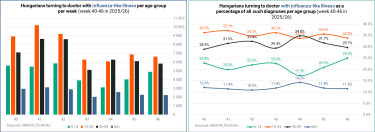
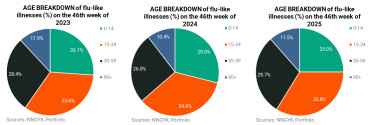
Cover image: Secretariat of the Eötvös Loránd Research Network








